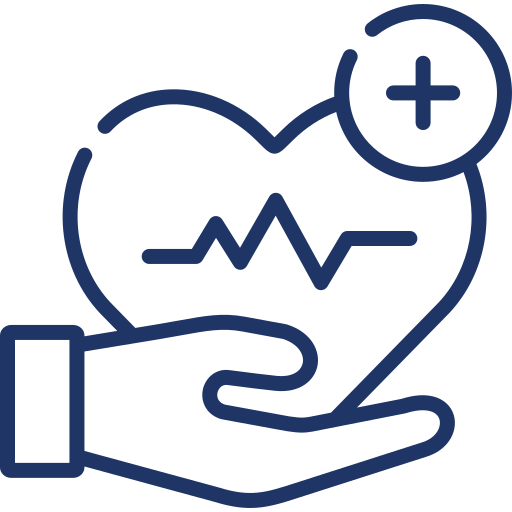You’ve just been told your blood sugar is too high. Or too low. You’re probably thinking what now? While there are medications to address these issues, here are four easy to follow tips that you can use to help regulate your blood sugar along with your doctor’s recommendations.
What is blood sugar and why is it important?
Blood sugar is the glucose in our bloodstream. Glucose is a type of sugar that comes from the foods we eat.
Your body needs blood sugar. Every single organ and body system depends on the bloodstream to deliver oxygen and other essential nutrients, including blood glucose (blood sugar). Blood sugar provides our bodies with fuel. It also provides energy for the brain, nervous system, and muscles.
Why is my blood sugar not at the right level?
The human body regulates levels of blood glucose with insulin, a hormone that serves as a key to unlock our cells and pull glucose from the bloodstream into the cells. For many reasons, including lifestyle choices, environmental factors, and diseases, appropriate blood sugar levels are not maintained.
Trouble arises when there is insufficient glucose (low blood sugar) as well as an excess of glucose (high blood sugar).
Tip #1: Eat more fiber
Fiber is a type of carbohydrate that the body cannot digest. While most carbohydrates are broken down into glucose, fiber is not. Instead, fiber passes through the body undigested. Fiber helps to regulate the body’s use of sugars, keeping hunger and blood sugar levels in check.
Where can you find fiber?
Fiber comes in two varieties that are both beneficial to health: soluble and insoluble.
Soluble fiber, which dissolves in water, helps decrease blood glucose levels and blood cholesterol. Soluble fiber is found in oatmeal, apples, blueberries, nuts, and beans.
Insoluble fiber, which does not dissolve in water, helps propel food through your digestive system and promotes bowel regularity. Insoluble fiber is found in whole wheat products, legumes, kale, walnuts, and root vegetables such as carrots and potatoes.
Daily fiber intake recommendations vary by age and sex. For those 50 + years of age, recommendations are 30 grams for men and 21 grams for women. For individuals below 50, the suggested amount is 38 grams for men and 25 grams for women.
There are many easy ways to add fiber into your diet including adding nuts and seeds to salads, oatmeal, and yogurt.
Filling at least half of your plate with vegetables will not only add fiber to your meal, but other essential vitamins and minerals. Replacing white pasta with higher fiber options, such as whole wheat, chickpea or lentil, will promote fiber intake and increase satiation.
When increasing fiber intake, it is important to remember to start slowly and stay hydrated! Fiber needs water for proper digestion.
Tip #2: Move more
What is the “best” form of exercise? It is whatever you enjoy and will do on a consistent basis. Indeed, engaging in any type of regular exercise, whether it’s aerobic or strength training, is beneficial in helping regulate blood sugar levels.
If you enjoy Zumba, go for it! Or maybe running is your thing? Lace up those shoes. Enjoy lifting weights at the gym? Power up that playlist.
The truth is, exercise in general works to keep blood sugar levels down by speeding up the movement of glucose from our blood into the skeletal muscle. Even going for a short walk after eating has been shown to improve blood sugar responses.
Research shows that engaging in physical activity for 150-175 minutes per week (spread out however you’d like) improves blood sugar levels and even reduces the risk of developing type 2 diabetes by 40-70%.
If you’re new to working out, remember to start slow. Take the time to build up stamina and find forms of movement you enjoy. The important thing is to get started and keep going.
Tip #3: Practice stress management
Stress is a natural part of life. Stress can come from many sources including work, family, finances, school, friends, illness, and injury. Both immediate and long-term stressors can negatively impact glucose metabolism.
When the body experiences stress, it releases cortisol, the primary stress hormone. A higher serum cortisol level causes the body to decrease insulin secretion. Without the proper release of insulin, more sugar remains in the blood. Thus, stress is contributing factor to high blood sugar levels.
Learning how to deal with stress is beneficial to not just your blood sugar levels but your overall health. Go for a walk. Listen to music. Phone a friend or a loved one. Meditate. Try journaling. Take a power nap.
Get off of social media. Light a candle. Take a bath. Drink some tea. Experiment with different strategies that make you happy and help you relax. Having go-to management tools in place will not only help alleviate your stress, it will also help you better control potential spikes or drops in blood sugar levels.
Tip #4: Snack smarter
Who doesn’t love a snack? According to a recent report, 95% of Americans snack at least once a day, and 50% of adults endorse snacking 2-3 times per day. Snacking can be a great way to boost your nutrition and keep blood sugar levels more stable during the day and overnight.
While snacking provides both nutrition and pleasure, overindulging and snacking on the wrong types of ultra-processed or sugar-laden foods are deleterious to maintaining proper blood sugar levels.
A good rule of thumb when selecting your snacks – and meals for that matter– is to pair macronutrients together (a protein with a carbohydrate). Eating a simple carbohydrate by itself will spike your blood sugar and lead to a crash soon after.
Popular snack foods that are classified as a simple carbohydrate include cookies, chips, pretzels, soda, and fruit juice. To prevent the sugar-spike roller coaster that follows simple carbohydrate consumption, be mindful of the portion of your simple carbohydrate and pair it with a source of protein.
For instance, if you are going to eat some crackers or pretzels, pair it with cheese, nut butter, or hummus. Better yet, swap it out for a handful of nuts, or vegetable crudites, or fresh fruit. Consuming snacks with protein, healthy fats and fiber will lead to more controlled blood sugar levels, helping to maintain your energy level throughout the day.
Another good strategy to help you snack smarter is pre-prepare your snacks. Rather than trolling the vending machine or buying a packaged treat out of necessity, buy small snack bags or containers and keep them filled with your snacks for the week. Bring your snacks to work, school, and on your commute. Having a handy and healthy snack readily available will help keep your blood sugar in check.
Last of all, remember this
Maintaining blood sugar levels within a normal range is vital for health and wellness. Prioritizing nutrition, movement and stress management are easy tools to employ that will yield tremendous benefits. If you need nutritional guidance or an individualized plan, Nao Medical now offers one on one nutrition counseling services. Find out more here.





